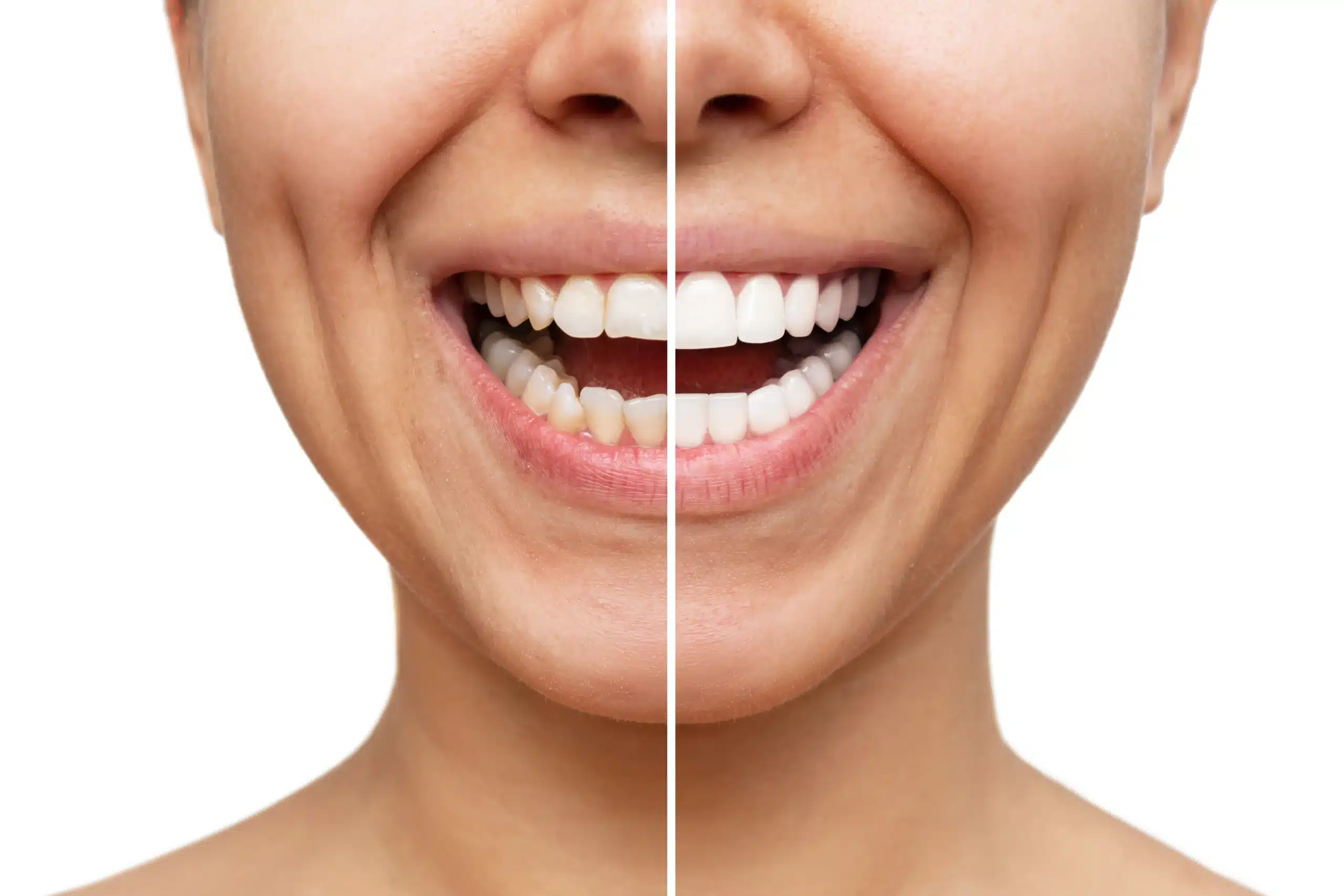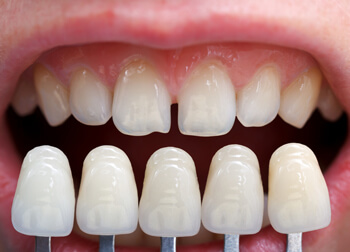Yes, veneers are typically not covered by insurance as they are considered a cosmetic procedure. However, some insurance plans may offer partial coverage for veneers if they are deemed necessary for functional reasons, such as repairing a damaged tooth.
Veneers are a popular cosmetic dental treatment that can transform the appearance of your smile. They are thin, custom-made shells that are bonded to the front surface of your teeth to improve their color, shape, size, or length. While many people are interested in getting veneers to enhance their smile, the cost and insurance coverage are important factors to consider.
Let’s explore the ins and outs of veneers and whether they are covered by insurance.
Introduction To Veneers
Veneers are a popular cosmetic dental treatment that can transform a person’s smile. They are thin, custom-made shells that are placed over the front surface of a tooth to improve its appearance. Veneers can be used to fix a wide range of dental issues, including crooked teeth, stained or discolored teeth, gaps between teeth, and chipped or broken teeth.
The Role Of Veneers In Smile Makeovers
Veneers play a vital role in smile makeovers. Smile makeovers are a comprehensive approach to improving the appearance of your smile. They can involve several cosmetic dental treatments, including teeth whitening, orthodontics, and veneers. Veneers can be used to create a uniform appearance for teeth that are uneven or chipped. They can also be used to cover stains that are resistant to teeth whitening treatments.
Types Of Veneers: Porcelain Vs. Composite
There are two main types of veneers: porcelain and composite. Porcelain veneers are made from a thin shell of porcelain that is custom-made to fit over your teeth. They are durable, stain-resistant, and can last for up to 15 years. Composite veneers, on the other hand, are made from a tooth-colored resin that is applied directly to your teeth. They are less expensive than porcelain veneers but may not last as long.
| Veneer Type | Pros | Cons |
|---|---|---|
| Porcelain | Durable, Stain-resistant, Long-lasting | Expensive |
| Composite | Less expensive, Can be done in one visit | Not as durable, May discolor over time |
Ultimately, the type of veneer that is right for you will depend on your individual needs and budget. Your dentist can help you make the right decision based on your specific situation.

Credit: wayzatadental.com
Cost Factors For Veneers
When considering veneers, several key cost factors come into play. Material and labor costs, geographical price variations, and longevity and maintenance expenses are crucial aspects to understand.
Material And Labor
Veneers cost can vary based on the materials used and the labor fees involved. High-quality materials like porcelain tend to be more expensive than composite resin. Labor costs also depend on the expertise of the dental professional.
Geographical Price Variations
The cost of veneers may differ based on the location of the dental practice. Urban areas and regions with higher living expenses often have higher pricing compared to rural areas. It’s essential to consider these geographical variations when budgeting for veneers.
Longevity And Maintenance Costs
Understanding the long-term costs of veneers is crucial. While veneers are durable, they may require maintenance or replacement over time. Regular dental visits and proper oral hygiene can impact the longevity and maintenance expenses associated with veneers.
Insurance Coverage For Veneers
Insurance coverage for veneers varies depending on the dental insurance plan. Some plans may partially cover veneers if deemed necessary for dental health. It’s advisable to check with your insurance provider to understand the extent of coverage for veneer procedures.
Insurance Coverage for Veneers Criteria for Coverage When considering veneers, it’s important to understand the criteria for insurance coverage. Most insurance plans consider veneers to be a cosmetic procedure, so coverage may be limited. However, if the veneers are deemed necessary for dental health, such as to repair damage or correct a misalignment, there may be a higher chance of coverage. It’s essential to consult with your insurance provider and dentist to understand the specific criteria for coverage. Navigating Insurance Policies Understanding the details of your insurance policy is crucial when seeking coverage for veneers. Some insurance plans may have specific exclusions for cosmetic procedures, while others may offer coverage under certain circumstances. Reviewing the policy’s terms and conditions, as well as speaking directly with the insurance provider, can help in navigating the complexities of insurance coverage for veneers. Partial vs. Full Coverage When it comes to insurance coverage for veneers, it’s important to distinguish between partial and full coverage. Partial coverage may include specific aspects of the veneer procedure, such as the initial consultation or diagnostic imaging, while full coverage may encompass the entire process. It’s vital to understand the extent of coverage provided by your insurance plan to make informed decisions regarding veneer treatment. In conclusion, understanding the criteria for coverage, navigating insurance policies, and distinguishing between partial and full coverage are essential when considering veneers covered by insurance. Always consult with your dentist and insurance provider to ensure you have a clear understanding of your coverage options.
Credit: www.evdp.net
Cosmetic Vs. Restorative Dentistry
Cosmetic dentistry and restorative dentistry are two distinct branches of dental care, each serving a unique purpose. Cosmetic dentistry primarily focuses on enhancing the appearance of the teeth, while restorative dentistry is aimed at repairing damaged or missing teeth to restore their function and health. Understanding the difference between these two areas of dentistry is crucial when considering the potential insurance coverage for veneers.
When Do Veneers Become Medically Necessary?
Veneers can be considered medically necessary when they are used to restore the function of damaged teeth, such as those affected by decay or trauma. In such cases, veneers may fall under the category of restorative dentistry and could potentially be eligible for insurance coverage. However, if the primary purpose of the veneers is purely cosmetic, insurance coverage may not apply.
Insurance Perspectives On Cosmetic Procedures
Insurance providers typically view cosmetic procedures, including purely aesthetic veneers, as elective and not medically necessary. As a result, coverage for such procedures is often limited or not included in standard dental insurance plans. It’s important for patients to carefully review their insurance policies and discuss the specifics with their dental care provider to understand the extent of coverage for cosmetic treatments like veneers.
Pre-approval And Documentation
When it comes to getting veneers covered by insurance, navigating the pre-approval process and ensuring the right documentation is in place is crucial. Understanding the steps for pre-approval and the essential documentation required for claims can streamline the process and increase the likelihood of insurance coverage.
Steps For Getting Pre-approval
- Consultation: Schedule a consultation with your dentist to discuss the need for veneers and determine if they are medically necessary.
- Insurance Verification: Verify your insurance coverage for veneers and understand the specific pre-approval requirements of your insurance provider.
- Treatment Plan Submission: Your dentist will submit a detailed treatment plan, including the rationale for veneers and any supporting documentation required by the insurance company.
- Prior Authorization: The insurance company will review the submitted documentation and provide prior authorization for the veneer procedure if it meets their criteria.
Essential Documentation For Claims
- Dental Records: Provide comprehensive dental records, including x-rays and intraoral images, to support the necessity of veneers for your oral health.
- Pre-Treatment Photographs: Submit clear photographs of your teeth to demonstrate the existing condition and the expected outcome with veneers.
- Cost Estimate: Include a detailed cost estimate for the veneer procedure, outlining the specific teeth involved and the proposed treatment plan.
- Clinical Justification: Your dentist should provide a clinical justification for veneers, highlighting any functional or aesthetic concerns that impact your oral health and quality of life.

Credit: www.keydentalplans.com
Alternative Financing Options
When it comes to getting veneers, the cost is a significant consideration for many individuals. While some dental insurance plans may cover a portion of the cost, it’s essential to explore alternative financing options to help make this investment in your smile more manageable.
Dental Payment Plans
Many dental offices offer in-house payment plans to help patients spread out the cost of veneers over time. These plans often involve setting up a payment schedule that aligns with the treatment timeline, making it easier to budget for the expense.
Healthcare Credit Cards
Healthcare credit cards, such as CareCredit, are specifically designed to cover medical and dental expenses. These cards often come with promotional financing options, allowing patients to pay for their veneers over an extended period without accruing interest, providing a flexible payment solution.
Dental Discount Programs
Some dental discount programs offer reduced rates on various dental procedures, including veneers. These programs typically involve an annual membership fee in exchange for discounted services, providing an affordable alternative for individuals without dental insurance coverage.
Maximizing Insurance Benefits
When getting veneers, understanding how to maximize your insurance benefits is crucial. By strategically timing your procedure, choosing in-network providers, and being aware of annual maximums, you can make the most of your coverage.
Timing Your Procedure Strategically
Plan your veneer procedure towards the end of the year to maximize annual benefits.
Choosing In-network Providers
Opt for dentists within your insurance network to reduce out-of-pocket costs.
Understanding Annual Maximums
Be aware of your insurance plan’s annual maximums to budget accordingly.
Case Studies: Success Stories
Discover real-life success stories of individuals who had veneers covered by insurance, showcasing how this dental procedure transformed their smiles and confidence. Learn how insurance coverage for veneers can make a significant impact on both oral health and overall well-being.
Veneers are a popular cosmetic dentistry procedure that can transform your smile, but many patients wonder if insurance covers the cost. The good news is that some insurance plans will cover veneers, depending on the reason for getting them. We’ve compiled some success stories of patients who achieved coverage for their veneers and some lessons learned from denied claims.Patients Who Achieved Coverage
Patient A had chipped front teeth that affected her confidence. Her insurance plan covered veneers because they were necessary to restore function and improve her overall quality of life. Patient B had severe discoloration that couldn’t be fixed with whitening treatments. Her insurance plan covered veneers because they were a medically necessary treatment to improve her oral health and prevent further damage.Lessons Learned From Denied Claims
While some insurance plans cover veneers, others may deny coverage for cosmetic reasons. Patient C wanted veneers to improve the appearance of her smile, but her insurance plan denied coverage because they deemed it unnecessary. Patient D had a history of grinding her teeth, which led to chipping and wear. Despite her dentist’s recommendation for veneers as a preventative treatment, her insurance plan denied coverage. In summary, it’s important to understand your insurance plan’s coverage for veneers and the reasons they may or may not be covered. If you’re considering veneers, talk to your dentist about the best options for your oral health and work with your insurance provider to understand your coverage.Frequently Asked Questions
What’s The Cheapest Veneers You Can Get?
The cheapest veneers available will depend on the material used and the location of the dental practice. Generally, composite veneers are more affordable than porcelain veneers. It’s best to consult with a dentist for specific pricing and options.
How Do People Afford Veneers?
Many people afford veneers through payment plans, dental insurance, or financing options. Some may also save up for the procedure.
How Many Teeth Can Be Covered With Veneers?
Veneers can cover any number of teeth, typically ranging from a single tooth to a full set.
How Much Do Veneers Cost In Austin Texas?
Veneers cost in Austin, Texas typically range from $800 to $2,500 per tooth. Prices vary based on materials and the dentist’s expertise.
Conclusion
Understanding how veneers are covered by insurance can ease financial concerns. It’s crucial to research your specific plan and consult with your dentist for clarity. Keeping up with regular dental check-ups is key to maintaining oral health and maximizing insurance benefits for veneer procedures.
